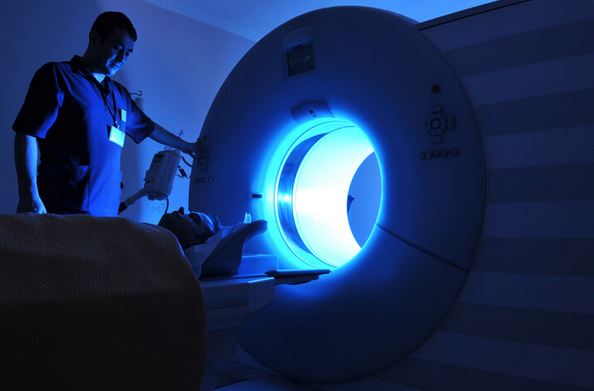Introduction:
MRI Tech is a crucial tool in modern medicine, providing detailed, non-invasive images of the human body. MRI scans are widely used in diagnosing conditions ranging from brain disorders to musculoskeletal injuries. At the heart of this advanced technology are MRI technologists, trained professionals responsible for operating the MRI machine, ensuring patient safety, and assisting radiologists in interpreting images. This article explores the fundamentals of MRI technology, the role of MRI technologists, career pathways, and future advancements in the field.
What is MRI Tech?
MRI technology is an imaging technique that uses strong magnetic fields and radio waves to create detailed images of the organs and tissues inside the body. Unlike X-rays or CT scans, MRI does not use ionizing radiation, making it a safer alternative for many medical applications.
How MRI Works
MRI works by aligning the hydrogen atoms in the body using a powerful magnet. When the radiofrequency pulses are applied, these atoms produce signals that are captured by the MRI scanner and transformed into images through complex algorithms. The process allows for highly detailed visualization of soft tissues, which is particularly useful for examining the brain, spinal cord, joints, and internal organs.
Key Components of an MRI Machine
An MRI scanner consists of several essential components:
Magnet: The core component that generates a strong magnetic field.
Radiofrequency Coils: These transmit and receive radio waves, enabling image formation.
Gradient Coils: Responsible for spatial encoding and image resolution.
Computer System: Processes signals and converts them into detailed images.
Patient Table: Moves the patient into and out of the scanner for imaging.
The Role of an MRI Technologist
MRI technologists are highly skilled professionals who operate MRI machines, ensure patient comfort, and obtain high-quality diagnostic images. Their responsibilities include:
1. Preparing Patients
Before conducting an MRI scan, technologists explain the procedure to patients, answer any questions, and ensure they are comfortable. Patients with metallic implants, pacemakers, or claustrophobia may require special attention. The technologist must assess the patient’s medical history to avoid complications.
2. Positioning and Imaging
MRI technologists must ensure patients remain still during the scan to avoid motion artifacts. They also select the appropriate imaging sequences based on the physician’s instructions.
3. Operating the MRI Machine
Technologists adjust scanner settings, monitor scan quality, and troubleshoot technical issues. Advanced knowledge of MRI protocols, contrast agents, and imaging parameters is necessary to produce optimal results.
4. Ensuring Patient Safety
MRI scanners operate with powerful magnets that can attract metal objects, posing risks to patients and staff. MRI technologists enforce strict safety protocols, such as screening for metallic items and using hearing protection to reduce noise exposure. In cases of emergency, they must be prepared to assist patients and communicate with medical teams.
5. Collaborating with Radiologists
After capturing images, MRI technologists work closely with radiologists to ensure diagnostic accuracy. They may need to repeat scans or adjust techniques based on initial findings to provide the best possible imaging results.
Educational Requirements
To become an MRI technologist, candidates typically complete an Associate’s or Bachelor’s degree in Radiologic Technology, followed by specialized training in MRI. Many programs offer coursework in anatomy, patient care, physics, and MRI protocols.

Certification and Licensing
Most MRI technologists pursue certification through organizations such as the American Registry of Radiologic Technologists (ARRT) or American Registry of Magnetic Resonance Imaging Technologists
(ARMRIT). Certification demonstrates competence and is often required for employment. In some states, a license is also necessary.
Job Outlook and Salary
The demand for MRI technologists is growing due to the increasing use of MRI scans in healthcare. According to the U.S. Bureau of Labor Statistics, MRI technologists earn a median annual salary of around $75,000, with opportunities for career advancement through experience and specialization.
Advancements in MRI Technology
MRI technology is continuously evolving, leading to improved imaging quality, faster scan times, and new medical applications. Some of the most significant advancements include:
1. Functional MRI (fMRI)
It is widely used in neuroscience research and pre-surgical planning for brain disorders such as epilepsy and tumors.
2. Open MRI Machines
Traditional MRI scanners can be uncomfortable for claustrophobic patients. Open MRI machines provide a less confining experience, making imaging more accessible for patients with anxiety or larger body sizes.
3. 3T and 7T MRI
Higher-field MRI machines, such as 3 Tesla (3T) and 7 Tesla (7T) scanners, offer superior image resolution, allowing for more precise diagnosis of neurological and musculoskeletal conditions.
4. Artificial Intelligence (AI) in MRI
AI-driven MRI analysis is improving image interpretation, reducing scan times, and assisting radiologists in detecting abnormalities with greater accuracy.
5. Portable MRI
Recent developments in portable MRI scanners are making imaging more accessible, particularly in emergency and rural healthcare settings.
Challenges in MRI Technology
Despite its advantages, MRI technology faces several challenges, including:
1. Long Scan Times
Compared to CT scans, MRI scans take longer, requiring patient cooperation to remain still.
2. Claustrophobia and Noise
Many patients experience discomfort due to the enclosed space and loud noise of MRI scanners. Technologists often use calming techniques or sedation for anxious patients.
The Future of MRI Technology
With ongoing research and innovation, MRI technology is expected to become even more efficient, accessible, and advanced. Areas of future development include:
Faster Scanning Techniques: Reducing scan times without compromising image quality.
Improved AI Integration: Enhancing image processing and diagnosis.
Higher Magnetic Fields: Enabling even more detailed imaging.
Personalized Imaging Protocols: Tailoring scans to individual patient needs.
Conclusion:
MRI Tech play an essential role in modern healthcare, providing critical imaging that aids in diagnosing and treating various medical conditions. As technology continues to advance, the field of MRI promises exciting developments, making it an excellent career choice for those interested in medical imaging and patient care.
